Orgasm@india.com ransomware / virus (Removal Instructions)
Orgasm@india.com virus Removal Guide
What is Orgasm@india.com ransomware virus?
Orgasm@india.com ransomware wants your money
Another ridiculously-named ransomware has surfaced, and this time it is dubbed Orgasm@india.com virus. We have no idea what the authors of this virus meant by creating such email account for communication with victims, but it seems that racketeering definitely gives them pleasure. According to our research, Orgasm@india.com ransomware is just another member of Globe ransomware project, which contains numerous ransomware viruses that mark files with a specific file extension. For example, the virus that we discuss today adds such file extension: .orgasm. Besides, the virus encrypts files with strong cipher, which makes them inaccessible. The malicious program modifies them on a structural level, and they can be restored to the initial state only with a unique decryption key, which the virus removes from the victim’s computer as soon as the encryption is finished (it sends the key to criminals’ Command & Control servers).
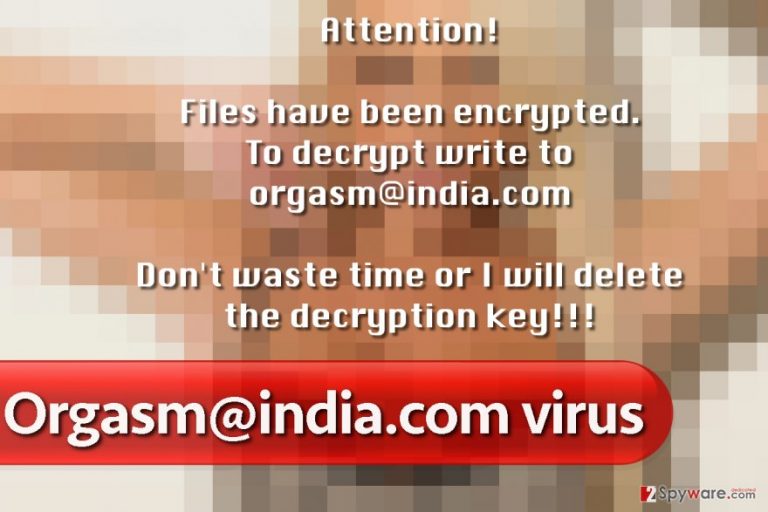
Orgasm@india.com malware is taciturn; it replaces the desktop picture with an image that displays just a few sentences of information, and just commands the victim to write to Orgasm@india.com email for more details. We assume that criminals seek to speak individually with each victim to be able to negotiate and extort as much money as possible. Criminals ask victims to transmit the ransom payment via Bitcoin payment system to remain anonymous. We heartily recommend you NOT to pay because you do not know whether they are going to give you the decryption tool or not. Sending money to criminals means losing them, but keep in mind that you can get nothing in return. Therefore, we recommend you to remove Orgasm@india.com virus and restore files using data backup (if you have it, of course). Orgasm@india.com removal should be completed with an anti-malware tool like FortectIntego or SpyHunter 5Combo Cleaner because these programs can effectively detect all malicious programs and files and remove them at once to make your computer system intact again.
How does this ransomware spread?
Orgasm@india.com ransomware invades computers as a Trojan horse. It means that it pretends to be something that it isn’t; for example, you can receive an email from criminals, which contains a malicious attachment named as “Invoice” or “Phone bill.” Of course, such attachment looks safe at first sight; however, even if it is a document, it can contain a malicious script or simple have a hidden file extension (.exe). As soon as you open it, it drops the destructive payload on the system, corrupts files and shocks the computer user with a sordid surprise: files have been encrypted, and criminals want a ransom. Although this is the most banal way to distribute malware, shockingly, it is very efficient. There are some other methods, such as malvertising or exploit kits, which are harder to plan and carry out, but more experienced malware creators manage to employ these techniques and even spread malware via legitimate websites. Such attacks can be stopped only by an up-to-date anti-malware software.
My computer has been infected, what should I do now?
If your files have been encrypted, it goes without saying that you want to restore them. However, we are afraid that this might not be possible, especially if you have no data backups. If you do not have data backups and if you do not plan to pay the ransom, remove Orgasm@india.com virus as soon as you can. This can be done using anti-malware software; in some cases, the anti-malware software cannot be launched because the virus blocks it. Therefore, you should use these Orgasm@india.com removal guidelines to prepare your computer for virus elimination.
Getting rid of Orgasm@india.com virus. Follow these steps
Manual removal using Safe Mode
Important! →
Manual removal guide might be too complicated for regular computer users. It requires advanced IT knowledge to be performed correctly (if vital system files are removed or damaged, it might result in full Windows compromise), and it also might take hours to complete. Therefore, we highly advise using the automatic method provided above instead.
Step 1. Access Safe Mode with Networking
Manual malware removal should be best performed in the Safe Mode environment.
Windows 7 / Vista / XP
- Click Start > Shutdown > Restart > OK.
- When your computer becomes active, start pressing F8 button (if that does not work, try F2, F12, Del, etc. – it all depends on your motherboard model) multiple times until you see the Advanced Boot Options window.
- Select Safe Mode with Networking from the list.
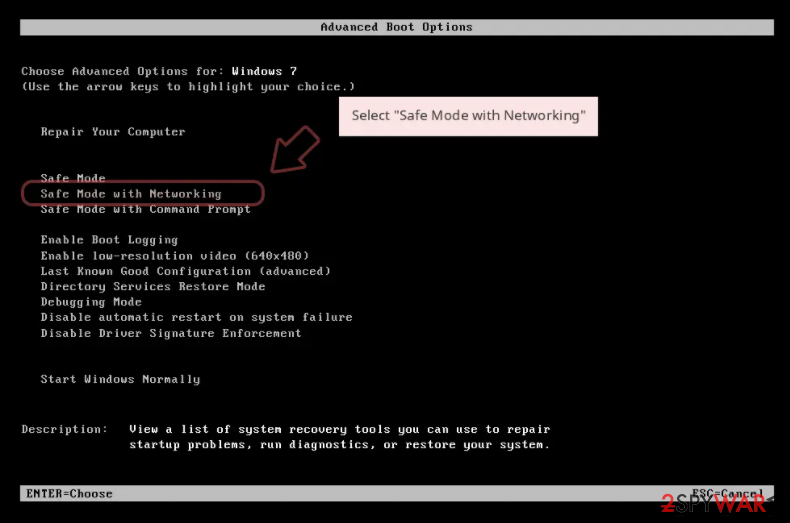
Windows 10 / Windows 8
- Right-click on Start button and select Settings.
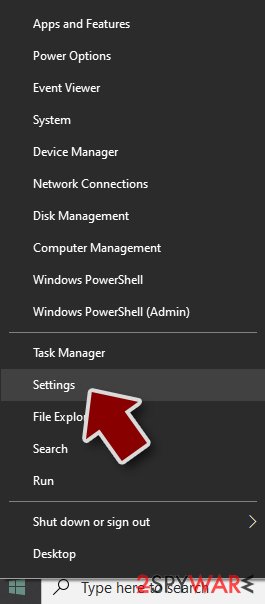
- Scroll down to pick Update & Security.
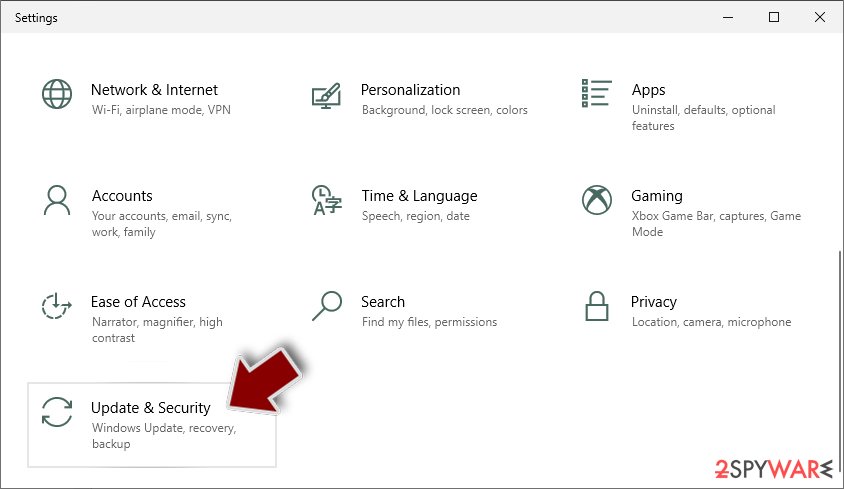
- On the left side of the window, pick Recovery.
- Now scroll down to find Advanced Startup section.
- Click Restart now.
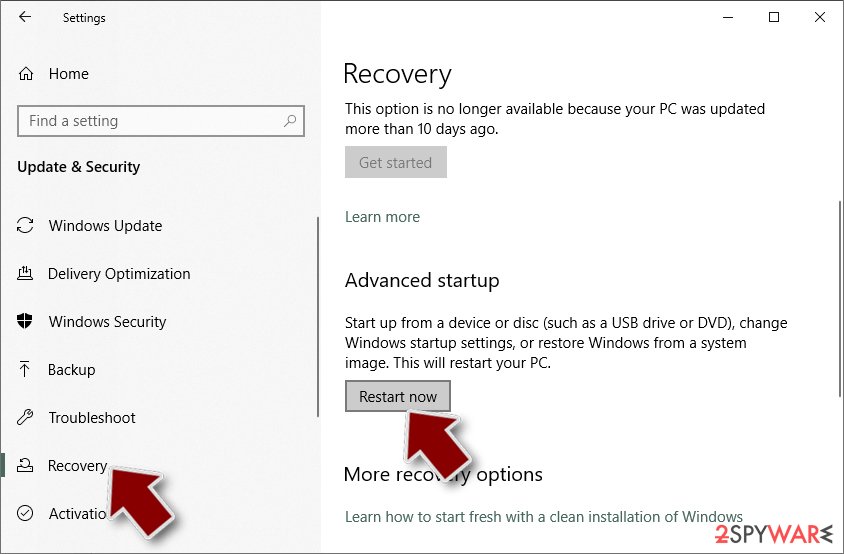
- Select Troubleshoot.
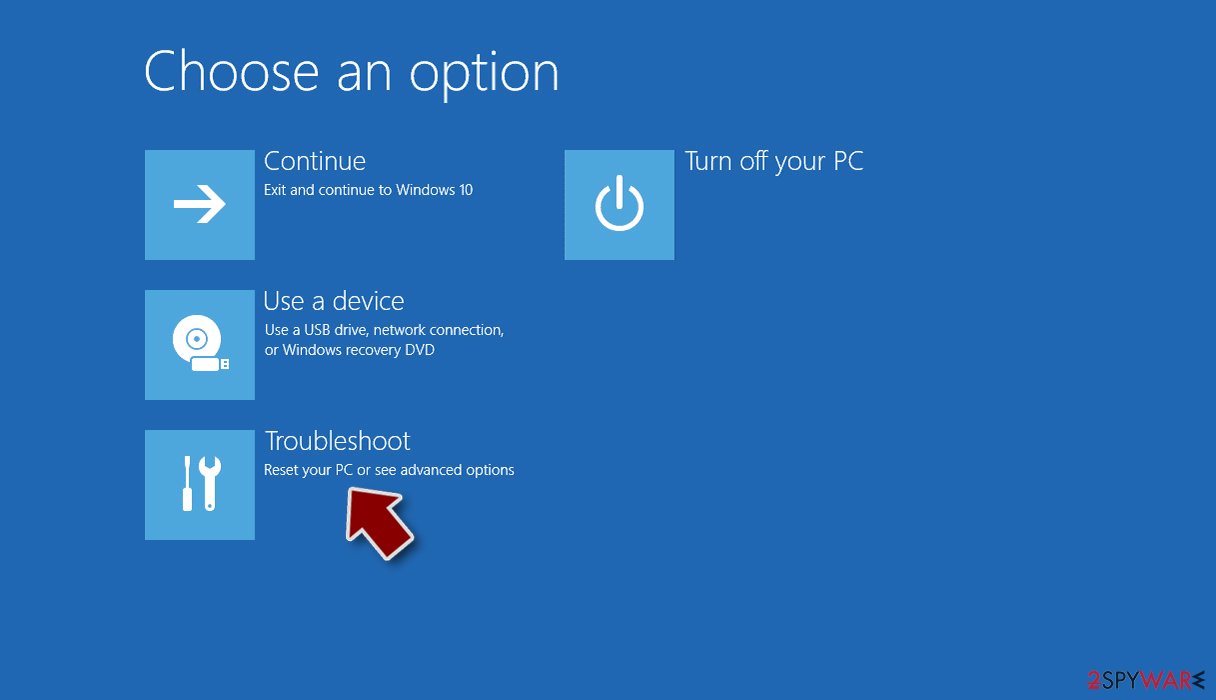
- Go to Advanced options.
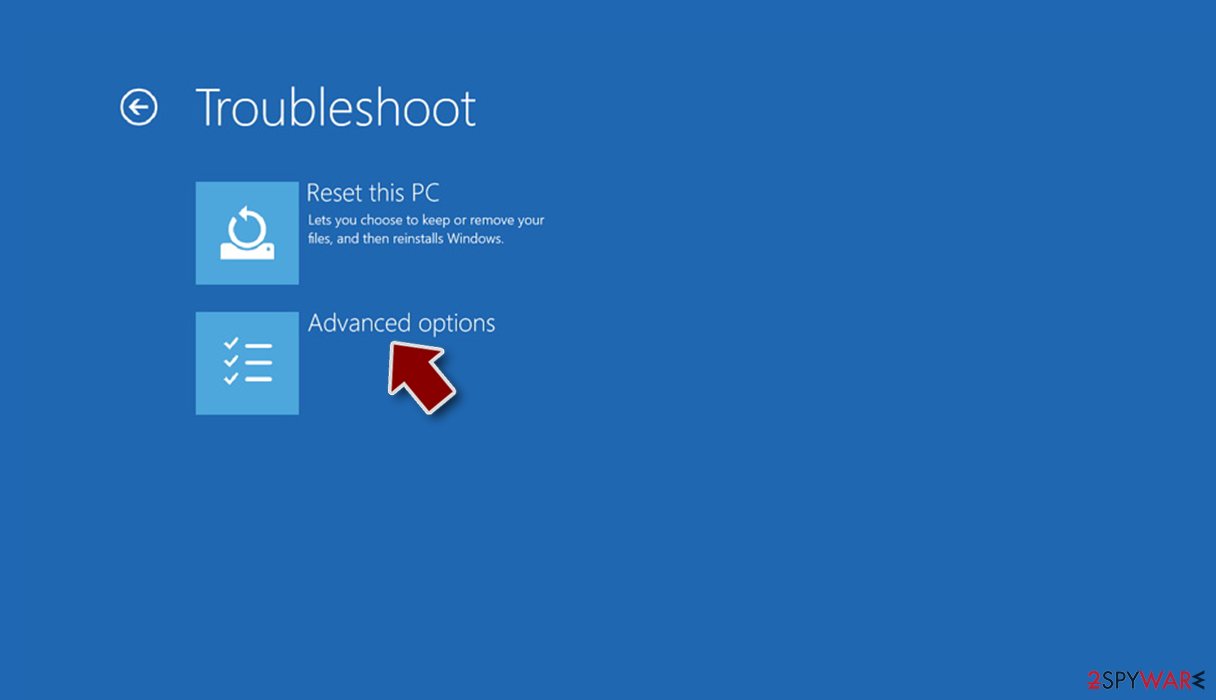
- Select Startup Settings.
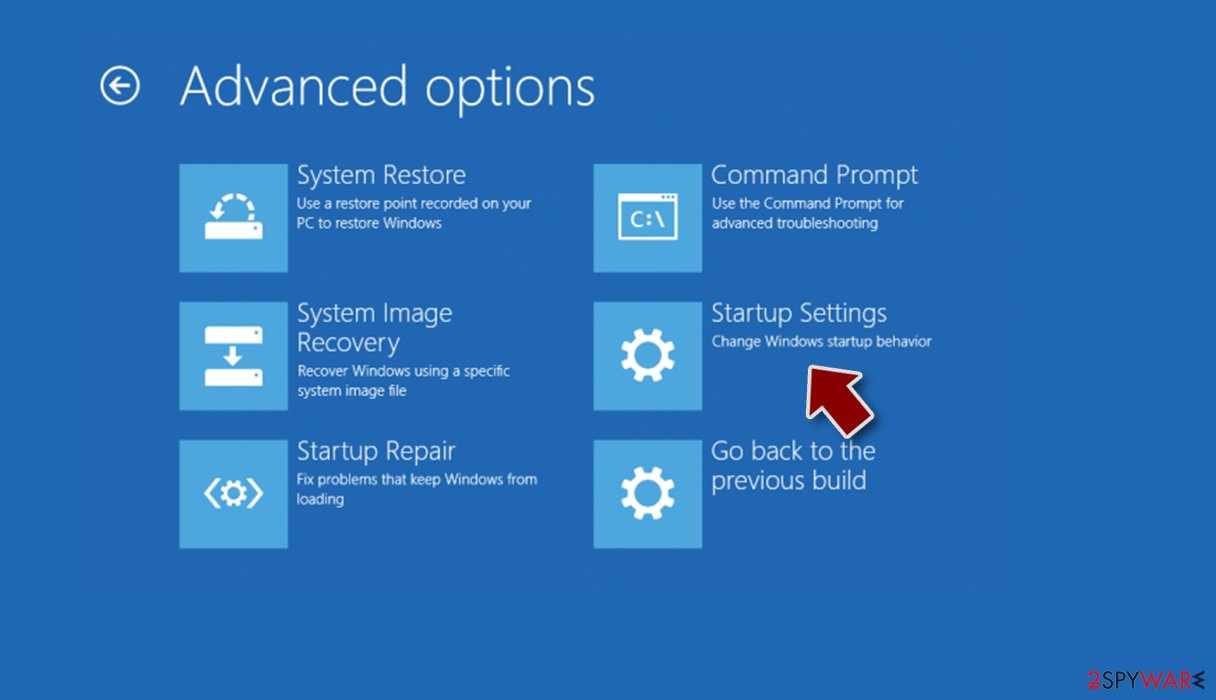
- Press Restart.
- Now press 5 or click 5) Enable Safe Mode with Networking.
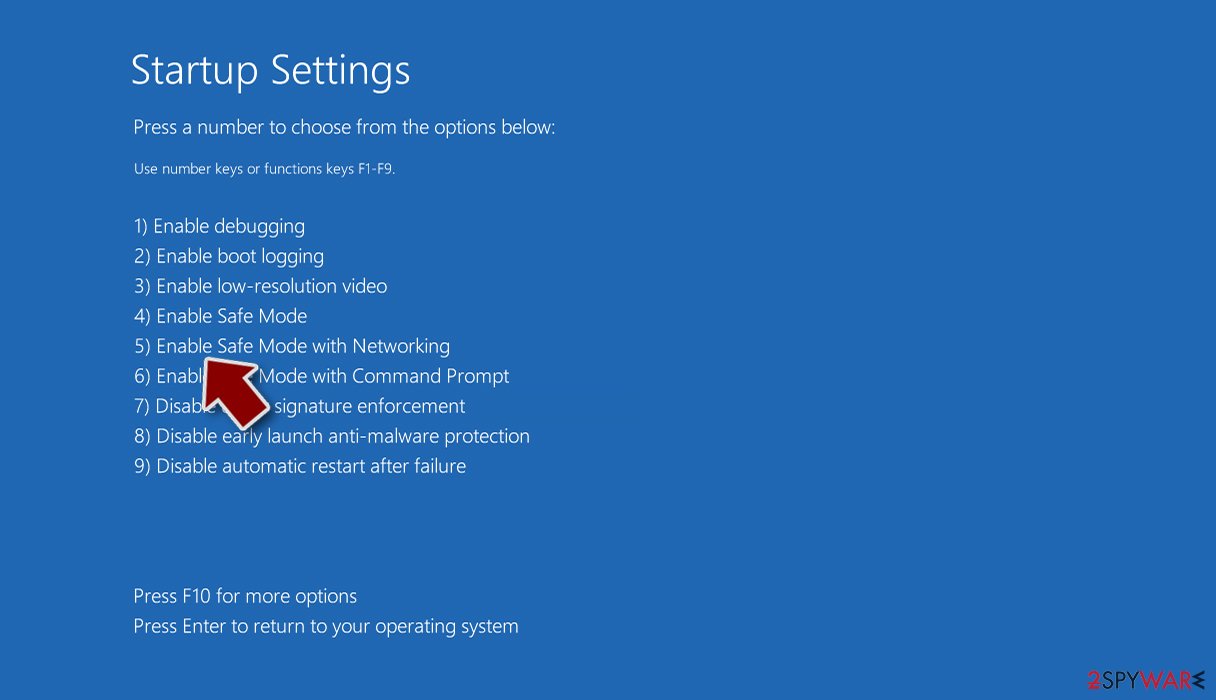
Step 2. Shut down suspicious processes
Windows Task Manager is a useful tool that shows all the processes running in the background. If malware is running a process, you need to shut it down:
- Press Ctrl + Shift + Esc on your keyboard to open Windows Task Manager.
- Click on More details.
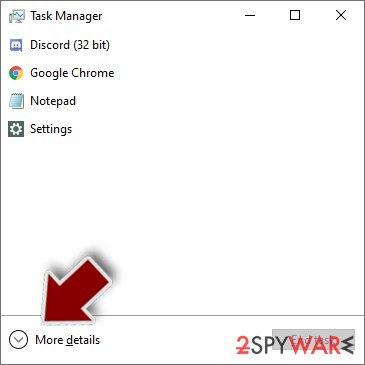
- Scroll down to Background processes section, and look for anything suspicious.
- Right-click and select Open file location.
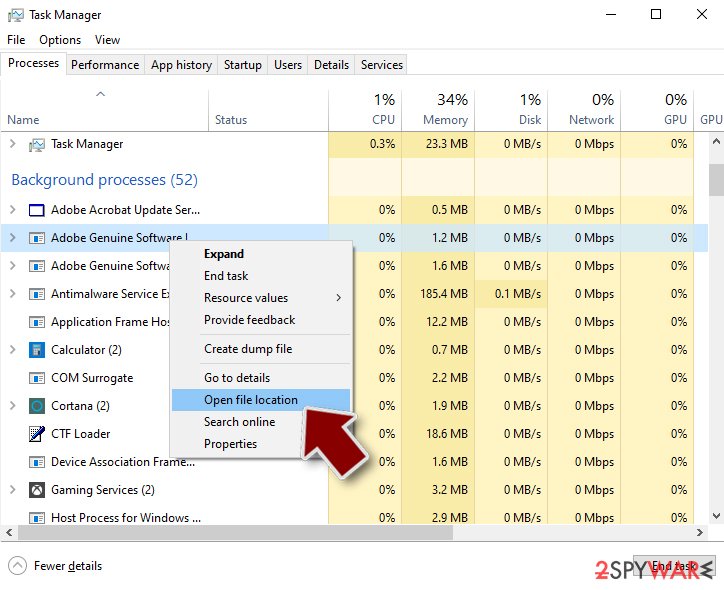
- Go back to the process, right-click and pick End Task.
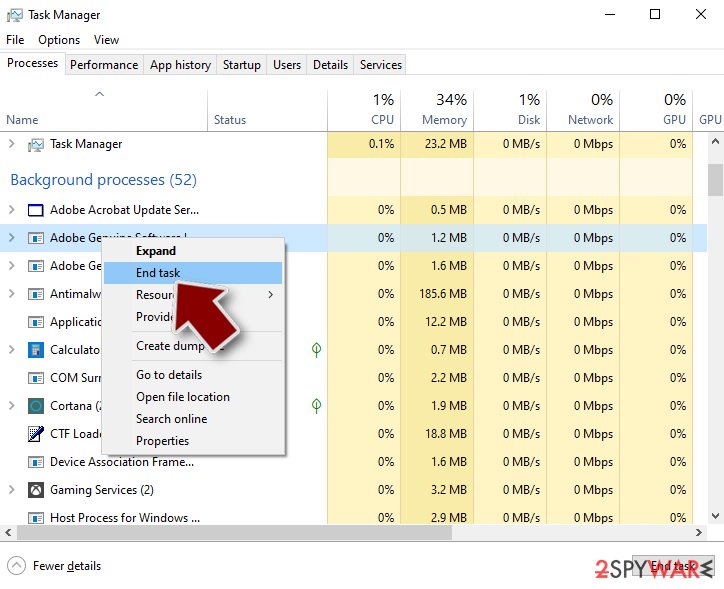
- Delete the contents of the malicious folder.
Step 3. Check program Startup
- Press Ctrl + Shift + Esc on your keyboard to open Windows Task Manager.
- Go to Startup tab.
- Right-click on the suspicious program and pick Disable.
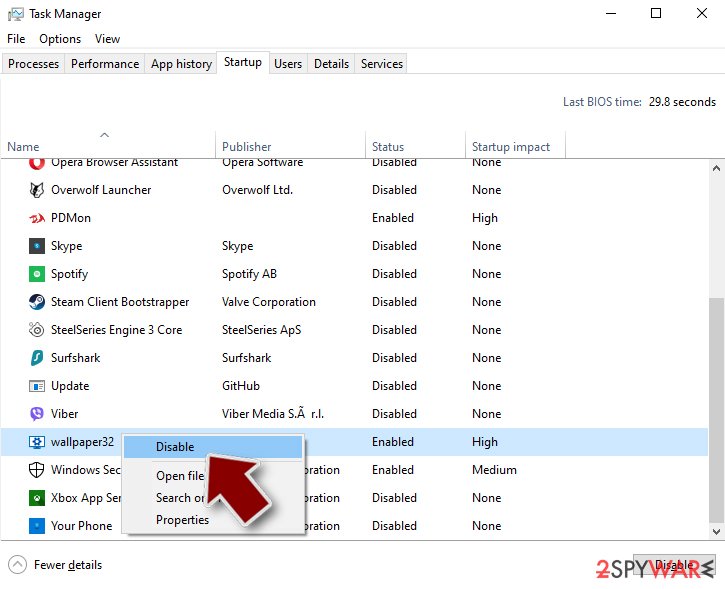
Step 4. Delete virus files
Malware-related files can be found in various places within your computer. Here are instructions that could help you find them:
- Type in Disk Cleanup in Windows search and press Enter.
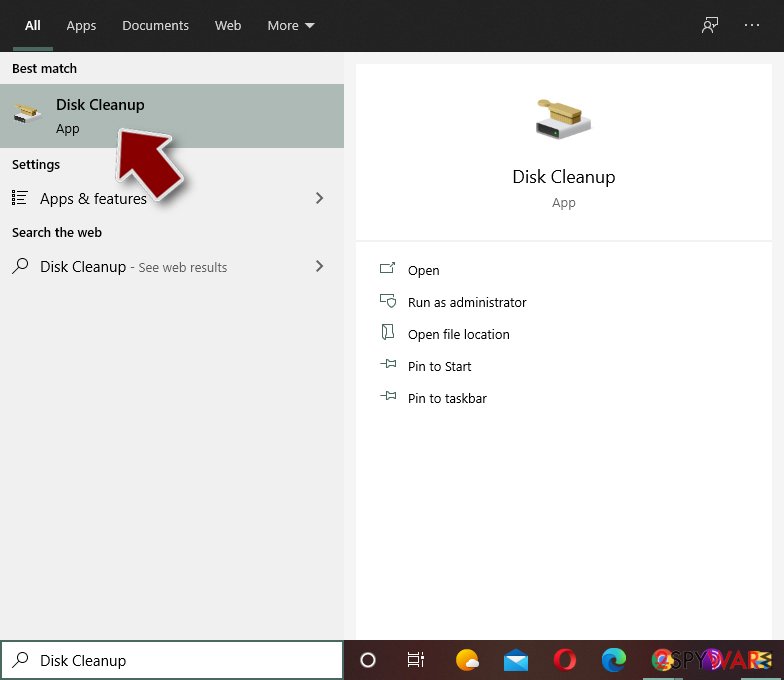
- Select the drive you want to clean (C: is your main drive by default and is likely to be the one that has malicious files in).
- Scroll through the Files to delete list and select the following:
Temporary Internet Files
Downloads
Recycle Bin
Temporary files - Pick Clean up system files.
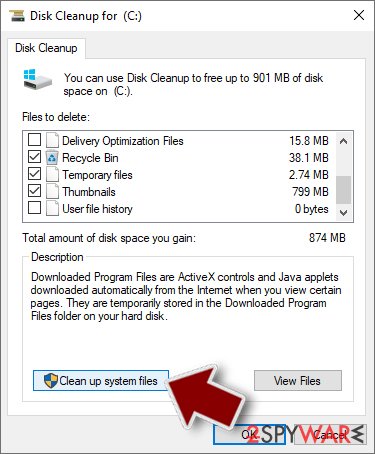
- You can also look for other malicious files hidden in the following folders (type these entries in Windows Search and press Enter):
%AppData%
%LocalAppData%
%ProgramData%
%WinDir%
After you are finished, reboot the PC in normal mode.
Remove Orgasm@india.com using System Restore
-
Step 1: Reboot your computer to Safe Mode with Command Prompt
Windows 7 / Vista / XP- Click Start → Shutdown → Restart → OK.
- When your computer becomes active, start pressing F8 multiple times until you see the Advanced Boot Options window.
-
Select Command Prompt from the list

Windows 10 / Windows 8- Press the Power button at the Windows login screen. Now press and hold Shift, which is on your keyboard, and click Restart..
- Now select Troubleshoot → Advanced options → Startup Settings and finally press Restart.
-
Once your computer becomes active, select Enable Safe Mode with Command Prompt in Startup Settings window.

-
Step 2: Restore your system files and settings
-
Once the Command Prompt window shows up, enter cd restore and click Enter.

-
Now type rstrui.exe and press Enter again..

-
When a new window shows up, click Next and select your restore point that is prior the infiltration of Orgasm@india.com. After doing that, click Next.


-
Now click Yes to start system restore.

-
Once the Command Prompt window shows up, enter cd restore and click Enter.
Bonus: Recover your data
Guide which is presented above is supposed to help you remove Orgasm@india.com from your computer. To recover your encrypted files, we recommend using a detailed guide prepared by 2-spyware.com security experts.If your files are encrypted by Orgasm@india.com, you can use several methods to restore them:
Rescue your files with Data Recovery Pro
Sadly, there is no decrypter developed particularly for this ransomware variant. However, we believe that Data Recovery Pro is a great alternative to it and might be capable of restoring at least part of your files. Just use these instructions and see if it can decrypt your files:
- Download Data Recovery Pro;
- Follow the steps of Data Recovery Setup and install the program on your computer;
- Launch it and scan your computer for files encrypted by Orgasm@india.com ransomware;
- Restore them.
NoMoreRansom solution
There is a site dedicated to helping victims of ransomware. We suggest you visit it frequently until a decryption tool gets released.
Finally, you should always think about the protection of crypto-ransomwares. In order to protect your computer from Orgasm@india.com and other ransomwares, use a reputable anti-spyware, such as FortectIntego, SpyHunter 5Combo Cleaner or Malwarebytes
How to prevent from getting ransomware
Stream videos without limitations, no matter where you are
There are multiple parties that could find out almost anything about you by checking your online activity. While this is highly unlikely, advertisers and tech companies are constantly tracking you online. The first step to privacy should be a secure browser that focuses on tracker reduction to a minimum.
Even if you employ a secure browser, you will not be able to access websites that are restricted due to local government laws or other reasons. In other words, you may not be able to stream Disney+ or US-based Netflix in some countries. To bypass these restrictions, you can employ a powerful Private Internet Access VPN, which provides dedicated servers for torrenting and streaming, not slowing you down in the process.
Data backups are important – recover your lost files
Ransomware is one of the biggest threats to personal data. Once it is executed on a machine, it launches a sophisticated encryption algorithm that locks all your files, although it does not destroy them. The most common misconception is that anti-malware software can return files to their previous states. This is not true, however, and data remains locked after the malicious payload is deleted.
While regular data backups are the only secure method to recover your files after a ransomware attack, tools such as Data Recovery Pro can also be effective and restore at least some of your lost data.







